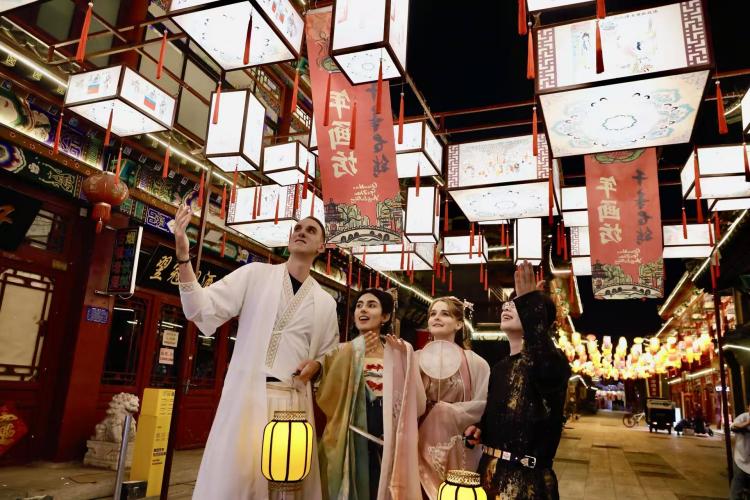Publicity Department of Xiqing District, Tianjin

As China celebrated the National Day and Mid-Autumn Festival from Oct. 1 to 8, Yangliuqing Ancient Town in Xiqing District, north China’s Tianjin, saw a surging influx of visitors, according to the publicity department of Xiqing District.
The exquisitely carved courtyard residences of the Ming and Qing dynasties, vividly rendered New Year paintings, and the winding ancient canal wove together into a living tapestry of folk culture, drawing in numerous international visitors who paused to snap photos and immerse themselves in the unique allure of this northern heritage town.
An official from the local publicity department noted that Yangliuqing, a renowned historical and cultural town in China, boasts a history spanning nearly 1,000 years. Within the town, well-preserved ancient architectural complexes such as Shijia Courtyard and Anjia Courtyard showcase the architectural ingenuity of northern Chinese dwellings from the Ming and Qing dynasties, thanks to their intricate wood, stone, and brick carvings.
Among the gray bricks and tiles, time seems to stand still; every latticed window and every stone step whisper tales of the town’s former glory.
What truly elevates Yangliuqing to global fame, however, is its woodblock New Year paintings, a tradition passed down for over 400 years.
The five core techniques behind these artworks — outlining, carving, printing, painting, and mounting — are more than just craftsmanship; they are a cultural symbol. Classic pieces like “The Fish of Abundance” and “Five Boys Vying for a Lotus” (both steeped in auspicious symbolism) have captivated international tourists with their vibrant hues and meaningful motifs.
Inside Yuchenghao New Year painting workshop, foreign visitors watched intently as inheritors of this intangible cultural heritage demonstrated the craft. They even tried their hand at block printing, soaking in Chinese aesthetics amid the scent of ink.
“Every painting here has a story to tell,” said Li Shuyun, a Hungarian exchange student, holding up her freshly printed New Year painting for a photo. “I’m taking this ‘good fortune’ artwork home to let more people discover this incredible art form.”
As night fell, technology breathed new life into Yangliuqing Ancient Town. Hundreds of drones took flight, turning the town’s starlit sky into a dynamic “canvas.”
The drones morphed into scenes of a camel caravan trundling along an “aerial Silk Road” — a nod to Yangliuqing’s past prosperity as a key canal town. Soon after, massive woodblock New Year painting patterns unfurled across the night, blending traditional auspicious designs with modern programming art. The spectacle drew gasps of wonder from the crowd below.
With its thousand-year cultural legacy reborn during festivals, Yangliuqing Ancient Town, endowed with irreplaceable cultural depth and warm, lived-in charm, has become a vivid window for the world to gain insight into traditional Chinese culture.
Source: Publicity Department of Xiqing District, Tianjin
